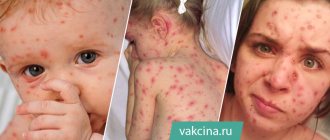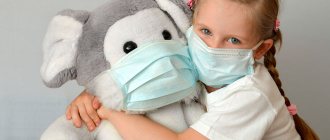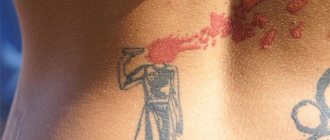CHICKENPOX IN CHILDREN: SYMPTOMS, COURSE, TREATMENT
Home — Social networks — CHICKENPOX IN CHILDREN: SYMPTOMS, COURSE, TREATMENT
CHICKENPOX IS A DISEASE THAT IS NOT LOSSING ITS POPULARITY. WHOLE KINDERGARTENS AND FAMILIES HAVE IT: CHILDREN, ADULTS, FUTURE MOMS. BUT DESPITE THE FELLOWSHIP, THE SYMPTOMS AND TREATMENT OF CHICKENPOX IN CHILDREN AND ADULTS CONTINUE TO CAUSE MANY QUESTIONS. TODAY OUR EXPERTS WILL ANSWER THE MOST COMMON OF THEM.
WHAT IS CHICKENPOX
Varicella zoster virus is a type of herpes. More precisely: the herpetic virus varicella zoster (Varicella zoster), the 3rd type of herpes viral infection. The signature sign of chickenpox is a blistering rash that often covers the entire body (although there are also cases of localized rashes). In the past, each such pimple was supposed to be smeared with brilliant green, so in our country chickenpox is firmly associated with children with green spots. Dr. Komarovsky even has a joke about this: “A spotted green rash is a characteristic symptom of chickenpox.” When the blisters burst, they cause itching, which can lead to scratching and secondary infection of the wounds. The “favorite” season of the disease is considered to be autumn-winter, and epidemic outbreaks are recorded once every 5 years.
Chickenpox predominantly affects children aged 1 to 10-12 years, and the majority of cases are among children 3-4 years old.
HOW INFECTION WITH CHICKENPOX OCCURS
Susceptibility to the chickenpox virus is very high because it is very volatile - it covers distances of up to 20 m, from floor to floor, through ventilation. Chickenpox is transmitted through the mucous membranes of the eyes and upper respiratory tract. But the virus has several ways of entering someone else’s body from a patient. The virus literally travels with the wind: through airborne droplets - when talking, coughing, crying loudly, or screaming. It spreads through contact and household contact - infection with saliva or fluid from a pimple. Transmitted by direct touch. A pregnant woman with chickenpox can infect her child, since the virus passes transplacentally, that is, through the placental barrier from mother to fetus.
To become infected with chickenpox, it is enough to communicate with someone who has chickenpox or someone who has shingles (herpes zoster), and chickenpox infection will occur even with fleeting contact with him. The period of contagiousness of chickenpox in patients begins at the end of the incubation period (48 hours before the appearance of the rash) and continues until the 5th day from the moment the last pimple appears. Moreover, the incubation period of chickenpox in children and adults is not typical at all and does not manifest itself in any way for 1-3 weeks (at least 7 days), so it is impossible to say exactly when those same 48 hours before the appearance of acne will occur.
INCUBATION PERIOD OF CHICKENPOX
The incubation period, that is, the time from the moment of introduction to the first signs of chickenpox, is 11-23 days. During this period, the pathogen penetrates through the mucous membrane of the upper respiratory tract, then multiplies and accumulates in the epithelial cells of these mucous membranes.
After the maximum accumulation of the chickenpox pathogen, it spreads through the lymphatic and blood vessels.
In some patients (there are very few of them), the end of the incubation period is marked by scarlet-like rashes. This may be the first sign of chickenpox in children and adults. This condition lasts literally one day, several hours, then the rash disappears, the temperature rises to 37-38⁰C.
WHEN DOES THE RASCH APPEAR DURING CHICKENPOX?
After the incubation period, the period of rash begins. These are the most obvious and first signs of chickenpox in children and adults. The period of rash lasts for 3-5 days, while the lymph nodes enlarge, the temperature rises to 37-39°C, persisting throughout the entire period of the rash. Also, each new outbreak of rashes is usually accompanied by a rise in temperature.
WHAT DOES THE RASHE (ACNE) LOOK LIKE WITH CHICKENPOX
A rash with chickenpox appears on the 1st day of the onset of intoxication, with breakouts (the appearance of new pimples) within 5 days - some pimples are already going away, while others are just appearing. Therefore, it seems that the patient has pimples of different types: blisters, spots, and crusts at the same time.
The rash does not have a favorite localization; rashes can even be on the scalp, on the mucous membrane of the mouth, genital organs in girls and women, conjunctiva/cornea, and larynx. All these pimples mature and heal within 5 days, and the rash is accompanied by itching of varying intensity. Against itching, various doctors recommend using antihistamines, wet wraps or even baths. During the first day, the red spot turns into a blister and after a couple of days the rash looks on the surface of the body like “dew drops” with transparent contents, which becomes cloudy after 1-2 days, and after another 1-2 days the blister dries out and turns into a crust that falls off after 1-3 weeks.
WHY ARE PIMLES LUBRICATED WITH ZELENKA
As Dr. Komarovsky wittily noted, speaking about chickenpox: “Painting a child with brilliant green is a personal matter for his parents, determined by their love of painting and has nothing to do with treatment.” In fact, brilliant green does not treat chickenpox rash, but is a medical marker with which the appearance of new pimples on the patient’s body is noted. As soon as new objects for staining with brilliant green stop appearing on the skin of a child with chickenpox, and old pimples have crusted over, that’s it, the child is no longer contagious. Nowadays, pimples are smeared with brilliant green only by those who firmly believe that it is one of the mandatory means of treating chickenpox. But this is a misconception. You can't cure pimples, you can only wait until they go away on their own. To avoid secondary infection of the skin, it is necessary to prevent scratching in the area of acne. To do this, you need to purchase other drugs from pharmacies that are specially created to eliminate symptoms of such diseases. They relieve itching, dry, have a cooling effect and, by the way, are also not completely colorless.
WHEN DOES A PATIENT WITH CHICKENPOX STOP BEING INFECTIOUS?
A patient with chickenpox ceases to be contagious as soon as the appearance of new pimples has stopped, and crusts have already formed on all existing ones. The recovery period lasts for 3 weeks from the end of the rash and is characterized not only by the falling off of the crusts, but also by the formation of lifelong immunity. After the crusts fall off, dark spots remain, which disappear within a few weeks. There are no scars left unless there is a secondary infection.
CHICKENPOX IN INFANTS
Breastfed newborns up to 6 months usually do not get sick due to antibodies received from the mother, but only if the mother herself has previously had chickenpox or has been vaccinated. If the mother has not passed on these antibodies to the baby (not having them herself), then the baby may get chickenpox. Please note that we are talking specifically about breastfed babies. Formula-fed babies do not have such antibody protection.
In a sick infant, the disease is severe. Against the background of high temperature, intracranial pressure may increase, which will be indicated by visible pulsation of the fontanel and convulsions. The rashes in such babies are profuse and the maturation of the rash proceeds more slowly, becoming protracted - up to 9 days, instead of 5. Bacterial complications often occur.
For this reason, all newborns whose mothers have not had chickenpox or were infected a few days before birth, as well as all premature babies under 1 kg, regardless of the mother’s infectious history, must be administered a special immunoglobulin. This is not a vaccination against chickenpox, but temporary protection against it until the child is strong enough to cope with this virus on his own, unless, of course, the mother chooses vaccination over the disease.
It is worth noting that children who are not in a group, children under 3 years of age, as a rule, very rarely have the opportunity to become infected with chickenpox. Adults also rarely get this disease.
IS IT DIFFICULT TO IDENTIFY CHICKENPOX?
In typical cases (and this is the majority of cases of chickenpox), the diagnosis of the disease is established on the basis of characteristic clinical data of the disease. The clinical picture of chickenpox is so typical that there is simply no need for additional diagnostics.
However, in some cases, when the disease does not proceed in a completely typical manner, it may be necessary to carry out a differential diagnosis of chickenpox with other viral infectious diseases, mainly those that are accompanied by similar symptoms. We are talking, first of all, about influenza, parainfluenza, measles; in some cases, differential diagnosis with rubella may be required. For this, a blood test is done.
IS IT POSSIBLE TO CONFUSE CHICKEN POX AND RUBELLA?
The doctor, of course, will not confuse these diseases. For doubting patients, you need to keep in mind their obvious differences. With chickenpox, a polymorphic rash is most often observed, that is, spots, crusts, and blisters are simultaneously present on the skin. With rubella, only a pinkish rash can be observed. With chickenpox, the temperature can rise to 40°C; with rubella, it occasionally reaches 39°C. The rubella virus is dangerous for the fetus; the chickenpox virus does not pose such an acute danger to pregnant women. Chickenpox can be complicated by inflammatory phenomena on the skin, but this does not happen with rubella. Chickenpox rarely goes away with catarrhal symptoms; with rubella, redness of the pharynx and catarrh of the upper respiratory tract almost always occur.
HOW TO TREAT CHICKENPOX IN CHILDREN?
If a child of the first year gets sick with chickenpox, treatment is carried out only under the supervision of a doctor with possible hospitalization
, because the course of infectious processes in young children is prone to generalization, frequent and severe complications and high mortality!
In children aged 2 to 10-12 years after diagnosis (with primary chickenpox), specific treatment for uncomplicated chickenpox is not carried out (and patients are not painted with brilliant green). All manipulations with a patient with chickenpox are associated with the relief of symptoms, namely: reducing the temperature with antipyretics (except aspirin) and relieving skin itching, if any. If the child does not look lethargic, if his temperature is not too high, then you should not convince him that he is very sick and needs bed rest. Children under 10-12 years of age suffer from chickenpox quite easily. And the only thing that usually torments them is the itching of the chickenpox rash. This problem is solved by using antihistamines.
To prevent the child from scratching the skin in areas of chickenpox rash, parents will have to monitor him and distract him. It is also necessary to monitor the child’s nails, and very young children can wear special mittens - “scratchies”. There is also a “grandmother’s” way to help a child with severe itching, even if antihistamines do not help - this is a feather. In the past, children were relieved of itching with a goose feather - with its help, mothers “scratched” especially disturbing places on the skin, without creating scratches.
A month after recovery from chickenpox, the doctor examines the patient, with an appointment for an immunological examination and specialist examination. Preventive vaccinations cannot be given within 1 month.
IS QUARANTINE FOR CHICKENPOX REQUIRED?
In the not-too-distant past, quarantine due to chickenpox was as commonplace as wearing war paint with brilliant green on children affected by this virus. But now, when there is a mass incidence of chickenpox, kindergartens and schools are usually not closed for quarantine. Groups and classes in which children with chickenpox have been identified continue to function, but they may be subject to temporary (up to three weeks) bans on outings, on contacts with children from other groups (classes), as well as on the admission of new children to them .
How can you get infected?
The virus is transmitted from person to person by airborne droplets. Chickenpox penetrates through the mucous membranes of the mouth, respiratory tract, and eyes deep into the body.
The chickenpox virus is very persistent and spreads quickly. He has the ability to penetrate even into other rooms and neighboring apartments. This is why children in groups become infected with chickenpox so easily. Just one child in a group who becomes infected with chickenpox immediately becomes dangerous for the children of the entire institution.
Epidemiology
The causative virus (varicella zoster) belongs to the herpetic family and, in addition to chickenpox, can lead to the appearance of shingles. But chickenpox, of course, is the most common manifestation of this infection.
Most often, this disease is observed in children approximately 6 years old (associated with visiting organized children's groups). Infants under 6 months have maternal antibodies, so they are immune to the disease.
Before the age of 10, about 80% of the child population suffers from chickenpox. Almost 88% experience a moderate form of the disease, and 4.5% do not even have a fever.
More than 7% of children suffer from a severe form of the disease.
Prevention
A person who has chickenpox develops acquired immunity, which remains normal for life.
Vaccination can be used for prevention in children who have not been ill. The Oka virus strain has been well studied and widely used. But among clinicians the attitude towards mass vaccination is ambiguous, which is primarily caused by the cost of the project.
Preventive measures also include quarantine. Chickenpox has a long incubation period of 21 days, so quarantine for contact children is introduced for 3 weeks.
Recently, cases of recurrent chickenpox have begun to occur. They are called breakthrough chickenpox. Most often, such cases are associated with disturbances in the child’s immune system.
As can be seen from the above, chickenpox is not just a rash and fever in childhood. This is a disease that requires a qualified approach to treatment and observation.
For more information about the symptoms of chickenpox and its treatment, watch the video:
This article has been verified by a current qualified physician, Victoria Druzhikina, and can be considered a reliable source of information for site users.
First signs
How does chickenpox start in children? First of all, the child develops:
- high temperature (up to 39.5°C),
- feverish reaction;
- moderate intensity headache;
- pain in the abdominal area (not always);
- general malaise;
- signs of intoxication (possible nausea and vomiting);
The first signs of chickenpox in children, as a rule, are indistinguishable from “normal” ARVI. The main symptom of chickenpox is a characteristic rash (first small pink spots, and then blisters with clear liquid).
When to see a doctor?
Parents should call a doctor if:
- Child's age is less than 6 months
- Inflamed, red areas of skin appear around the blisters, which may indicate a secondary bacterial infection.
- Children become increasingly ill, they become drowsy, the temperature rises above 38C, and children drink little liquid or refuse to drink
- If your child feels unwell with a high fever and a skin rash that looks like small, bright red or purple spots or bruises that don't fade when you press on them, this may be a sign of meningococcal infection.
Chickenpox is not dangerous when parents know what to do, vaccinate their child in a timely manner, and quickly decide to call a doctor. After an illness, a fairly stable immunity develops, and the likelihood of recurrent illness is minimal.
In our medical center, you can consult with an immunoprophylaxis specialist or a pediatrician about when you should vaccinate your child or call a doctor at home if your baby suddenly gets sick.
Call a doctor at home Make an appointment with a doctor or call +7 (812) 331-17-74
Severity
Depending on the characteristics of its course in children, chickenpox is divided into three forms:
| Mild degree | characterized by isolated rashes, absence of fever and poor health. Herpetic pimples appear in only 2–3 days. |
| Moderate | all the symptoms that traditionally occur with chickenpox in children are present. These include poor sleep, itchy skin, headaches, and a rise in temperature to high levels. Blisters form within 5–7 days. |
| Severe form | Due to high temperature (up to 40°C), the child experiences nausea and vomiting, headache, delirium, and fever. Papules appear on the body from 7 to 10 days. Multiple rashes cover different areas of the body. It can be found in the mouth and on the genitals. |
Folk remedies
There are various ways to get rid of itching due to chickenpox and in traditional medicine:
- At high temperatures, it is advisable to drink cranberry juice, viburnum drink, rosehip infusion, and sea buckthorn tea. Strawberry juice saturates the body well with nutrients and has a pronounced antimicrobial effect.
- Bath with chamomile. 5 tbsp. Pour a tablespoon of inflorescences (dry or fresh) into a liter of hot water, bring to a boil and simmer over low heat for a quarter of an hour, strain. Add the decoction to the filled bath. The procedure takes 10 minutes, perform twice a day.
- Tea tree oil. The only essential oil allowed for direct application to the skin, without conductive oil. If you treat all elements of the rash with tea tree oil using a cotton swab, this will significantly relieve itching and scabies. This procedure promotes disinfection and speedy healing of wounds.
- Mix equally chamomile flowers, coltsfoot grass, chicory grass, calendula flowers, burdock root and immortelle flowers. Brew the prepared mixture with a dose of 40 g with half a liter of boiling water. Let it brew in a thermos for 8 hours. Take 4 times a day, a third of a glass.
- Grind the calendula herb. Heat 60 g of calendula, previously brewed in a liter of water. Pour the strained broth into the bath and bathe the patient for a quarter of an hour in the morning and evening. Do not rub the skin.









